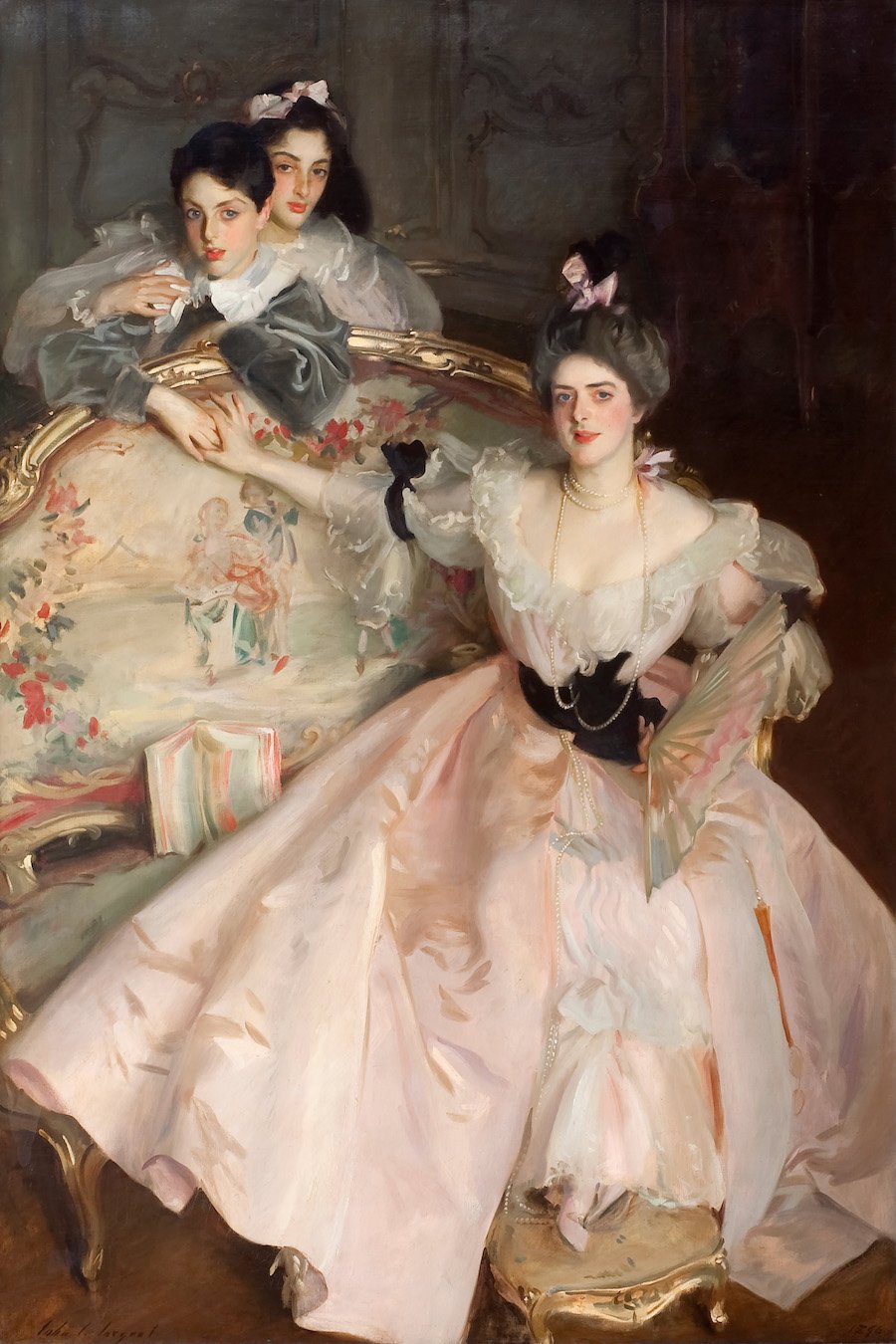
THE DAILY PIC (#1668): A good museum wall text is supposed to lead to interesting new thoughts on a work, and that’s what a text at the Jewish Museum in New York recently led to for me—by being hilariously wrong. The text was in aid of a glorious portrait titled Mrs. Carl Meyer and Her Children, painted in 1896 by John Singer Sargent. It belongs to Tate Britain in London but is now the subject of a brilliant one-painting show at the JewMu. The text talked about Sargent’s “worm’s-eye view” of his sitters—in a painting whose single most notable feature is the fact that it is painted from a wildly high vantage point, as though its artist had been up on a ladder near the ceiling.
I’m already on the record in my hatred of 99 percent of wall texts, so I won’t dwell on that. I will spend today’s column thinking about what the painting’s actual viewpoint might signify. It seems to me that, in the context of 19th-century Europe’s ubiquitous antisemitism—the Meyers were newly rich Jews—a view from above onto this family can only involve looking down on them. The risk implied by Jewish social mobility meant that this family—of “over-civilized European Orientals,” as one review put it—had to be portrayed in a way that gave viewers some kind of implicit power over them.
I’m not saying that Sargent himself was a (conscious) Jew-hater; I’m just saying that the painting he produced had the necessary effect of looking down on its subjects. And in fact in Victorian England the idea of “condescension” had positive connotations that even Sargent’s grateful sitters might have bought into: When those born into power deigned to notice their inferiors in any way, that “condescension” was seen as a gracious and virtuous act. The very fact that a great society portraitist should “condescend” to depict the Meyers, especially in their posh country estate, had to be counterbalanced by a viewpoint that kept the social strata in place. That balance, I’d say, is what made the painting win all kinds of prizes in its day.
Something else struck me about the painting’s “directionality”: Like its glance, the portrait’s illumination is coming strangely from above. In the 1890s, that would have been instantly recognizable as the light of the latest in gas or even electric ceiling fixtures, just then replacing the candles and oil lamps that had lit rooms for millennia. The Meyers, that is, may be posing in a room full of newly-bought ancien-régime trappings, but these nouveau-riche arrivistes can only receive a garish modern light. As one observer said of the painting, “The art of portrait-painting Jewesses and their children may be varied but cannot be further perfected.”
Full disclosure: I learned of that period quote from a Jewish Museum wall text.
For a full survey of past Daily Pics visit blakegopnik.com/archive.